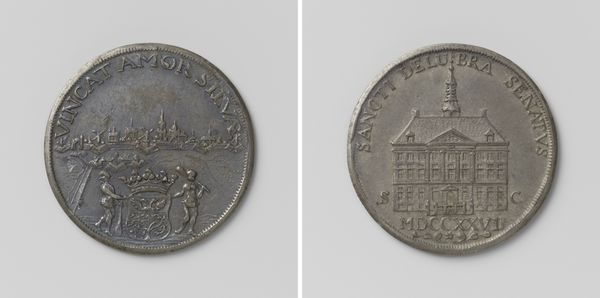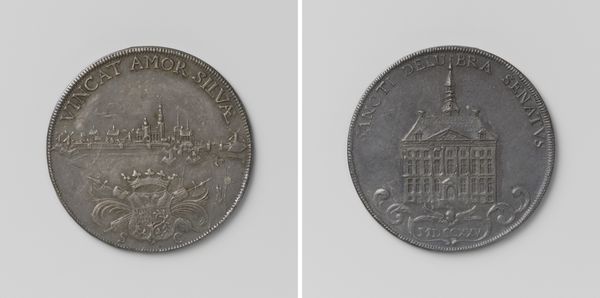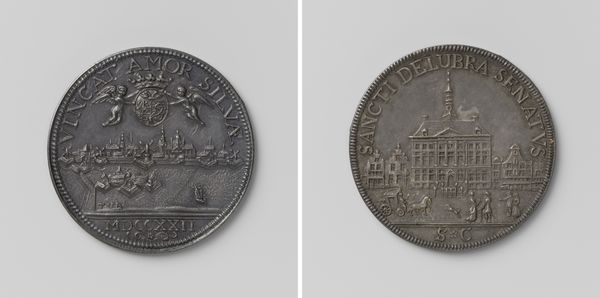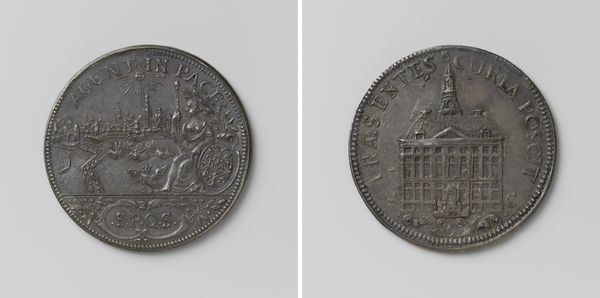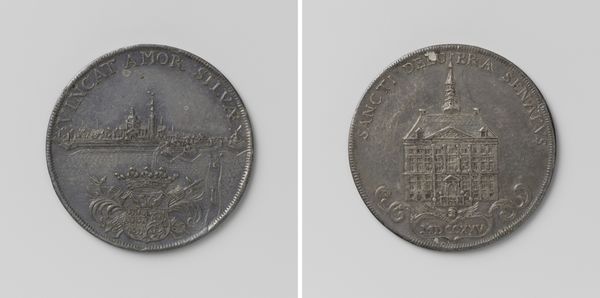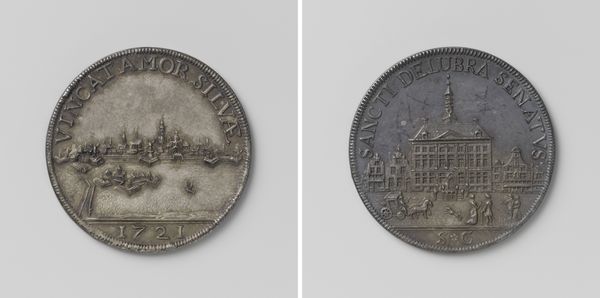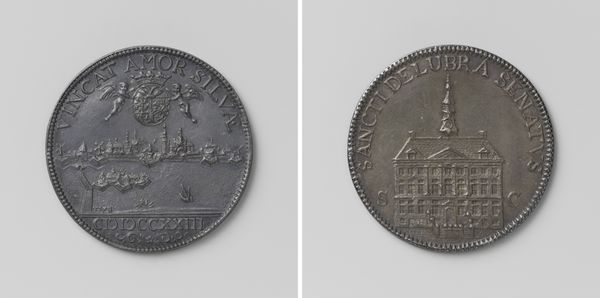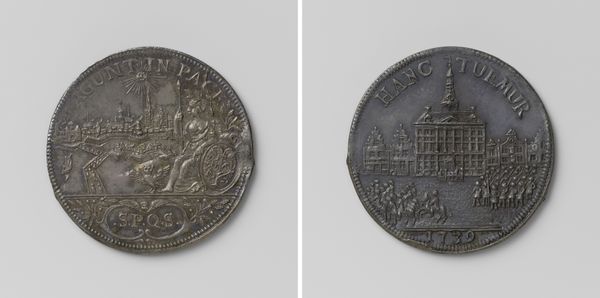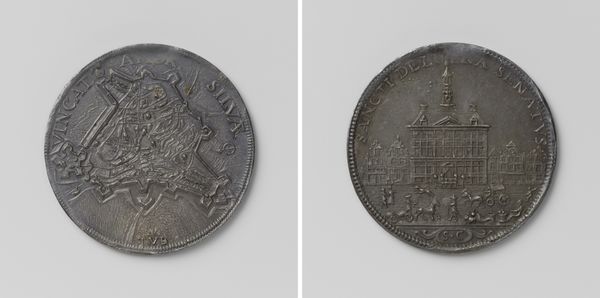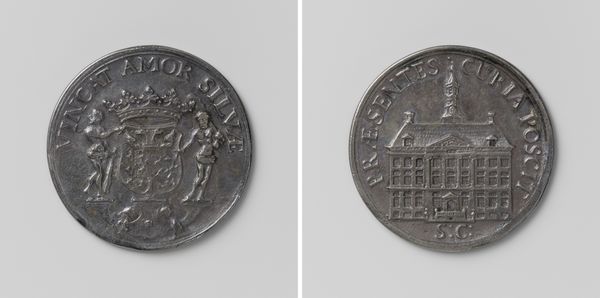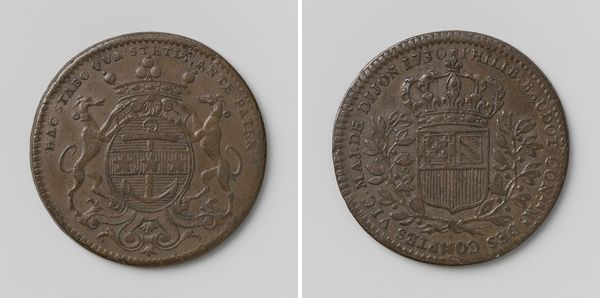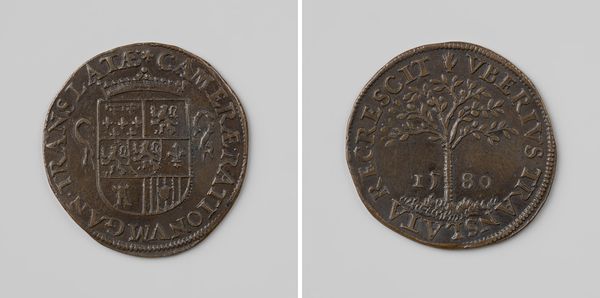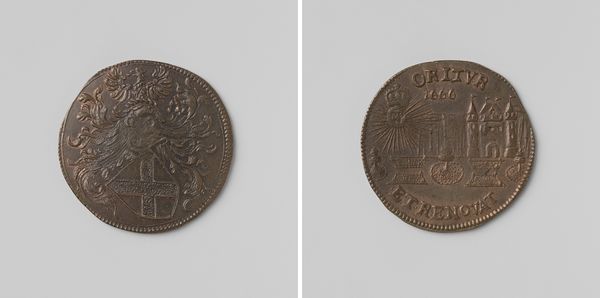
metal, relief, sculpture, engraving
#
portrait
#
baroque
#
metal
#
sculpture
#
relief
#
sculpture
#
cityscape
#
history-painting
#
engraving
Dimensions: diameter 2.7 cm, weight 6.45 gr
Copyright: Rijks Museum: Open Domain
Curator: Today, we're looking at the Vroedschapspenning of the city of 's-Hertogenbosch, created between 1714 and 1720 by Theodorus Casparus van Berckel. This piece, crafted from metal, is a fascinating example of Baroque-era relief sculpture. Editor: It's so intricate! My first impression is how stark the imagery feels. The precision in such a small format is astounding. It feels incredibly dense with information. Curator: Absolutely. Van Berckel really uses the limited space to its full potential. Note the sharp, deliberate lines; the clarity and texture work to create a structured, symbolic composition. The arrangement—almost a perfect circle, divided into halves—establishes a clear binary. Editor: It makes me wonder about the labor involved in producing such detail on metal. What tools were used, and what would a craftsman's daily life have been like during that era in 's-Hertogenbosch? The material itself speaks of value and permanence, indicative of civic pride. Was the creation of such a piece a community affair? Curator: That’s a very astute observation. Looking at the reverse, you can see the architectural rendering—likely of the city hall—which adds another layer of meaning. This architectural portrait functions almost like a visual contract, demonstrating the city's order and reason. Editor: Right, that resonates with the material used—the choice of metal here acts as more than a purely aesthetic preference. Was this perhaps commissioned to signify something—maybe solidifying trade agreements or memorializing something of communal value? Also, do we know where the metal was sourced? The very location from where it was sourced holds its own story, potentially influencing how the community engaged with the resulting imagery. Curator: Exactly. We know that these types of “city coins” served multiple purposes—awards, records, diplomatic gifts—they weren’t everyday currency. Van Berckel successfully elevates a practical object into an emblematic work of art. Editor: I agree. Investigating this city coin underscores how closely craft, labor, and material context can be intertwined with visual language to create a really powerful cultural statement. Curator: This piece continues to be a window into the complex history and symbolism embedded in seemingly simple objects. Editor: Indeed, it inspires a deeper look at not just what we see, but how such an object came to be and the labor that went into the end result.
Comments
No comments
Be the first to comment and join the conversation on the ultimate creative platform.
